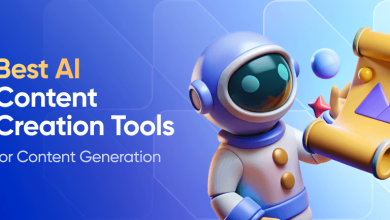Dangers of AI Bots for Children: Why Parental Control Matters

Artificial intelligence has become a powerful part of modern life, shaping the way we communicate, learn, and entertain ourselves. From smart assistants to AI-powered chatbots, children are growing up in a world where interacting with machines is almost as common as talking to peers. While AI offers undeniable benefits—instant access to knowledge, personalized learning, and engaging entertainment—it also poses serious risks, especially for children who may not have the maturity to distinguish safe interactions from harmful ones.
This article explores the dangers of AI bots for children and highlights how parental control solutions like Eyezy can help safeguard their digital lives.
The Hidden Risks of AI Bots
1. Exposure to Inappropriate Content
Many AI bots are trained on vast amounts of online data, which means they can sometimes generate or share information that isn’t suitable for children. Without strict safeguards, kids may be exposed to violent, sexual, or otherwise harmful material during seemingly harmless interactions.
2. Privacy Concerns
Children often share personal information freely online without understanding the consequences. Some AI bots may collect or misuse sensitive data, making kids vulnerable to identity theft, scams, or online predators who exploit AI platforms.
3. False or Misleading Information
AI bots are not infallible—they can produce inaccurate answers or even spread misinformation. A child relying on such tools for homework or decision-making may adopt false beliefs or develop skewed perspectives.
4. Emotional Manipulation
Children form attachments easily, and when AI bots are designed to mimic human empathy, kids may mistake programmed responses for genuine emotional connections. This could affect their social development and weaken their ability to form real-world relationships.
5. Cyberbullying and Predatory Behavior
While most bots are harmless, malicious individuals can disguise themselves as AI-driven platforms to trick children. These fake “bots” may be used as tools to initiate harmful conversations, bully, or groom young users.
The Role of Parents in Digital Safety
Given these dangers, it’s crucial for parents to play an active role in supervising children’s online experiences. Open communication about safe internet use is essential, but relying solely on verbal guidance may not be enough. Kids are curious and tech-savvy, often finding ways to bypass restrictions. That’s where parental control tools step in.
Eyezy: A Smart Solution for Parental Control
When it comes to monitoring and managing children’s online activities, Eyezy https://www.eyezy.com/forum/ stands out as one of the most comprehensive and user-friendly parental control applications. Designed with modern challenges in mind, Eyezy gives parents the ability to protect their children without being overly invasive.
Key Features of Eyezy
- Activity Monitoring: Eyezy allows parents to track what apps and websites their children are using, ensuring they don’t spend time on unsafe platforms or engage with harmful AI bots.
- Screen Time Management: With built-in controls, parents can set healthy limits on device usage, helping kids balance their online and offline activities.
- Social Media Supervision: Since many AI bots operate within messaging platforms, Eyezy provides insights into social interactions, alerting parents to suspicious conversations.
- Location Tracking: Beyond online safety, Eyezy also offers GPS tracking to ensure children are physically safe when they’re away from home.
- Data Security: Eyezy is designed with privacy in mind, ensuring that sensitive family data is protected while keeping children safe.
By integrating these features, Eyezy empowers parents to create a digital environment that encourages exploration and learning while minimizing risks.
Striking a Balance
While AI bots can be risky, banning children from using them entirely isn’t practical. Technology is part of everyday life, and when used responsibly, AI can enhance creativity, knowledge, and problem-solving skills. The key lies in balance: allowing kids to benefit from AI while ensuring their experiences remain safe and positive.
Parents should combine open dialogue with practical tools like Eyezy to create a safety net. By doing so, they give their children the freedom to explore digital spaces while staying shielded from potential harm.
Conclusion
AI bots are here to stay, and their influence on children will only grow stronger. While they offer exciting opportunities, the dangers—ranging from exposure to inappropriate content to emotional manipulation—cannot be ignored. Parents must take proactive steps to guide and protect their children in this evolving digital landscape.
With powerful tools like Eyezy, families can stay one step ahead, ensuring that technology remains a source of growth rather than risk. In the end, safeguarding children’s online experiences is not about limiting their future—it’s about securing it.









